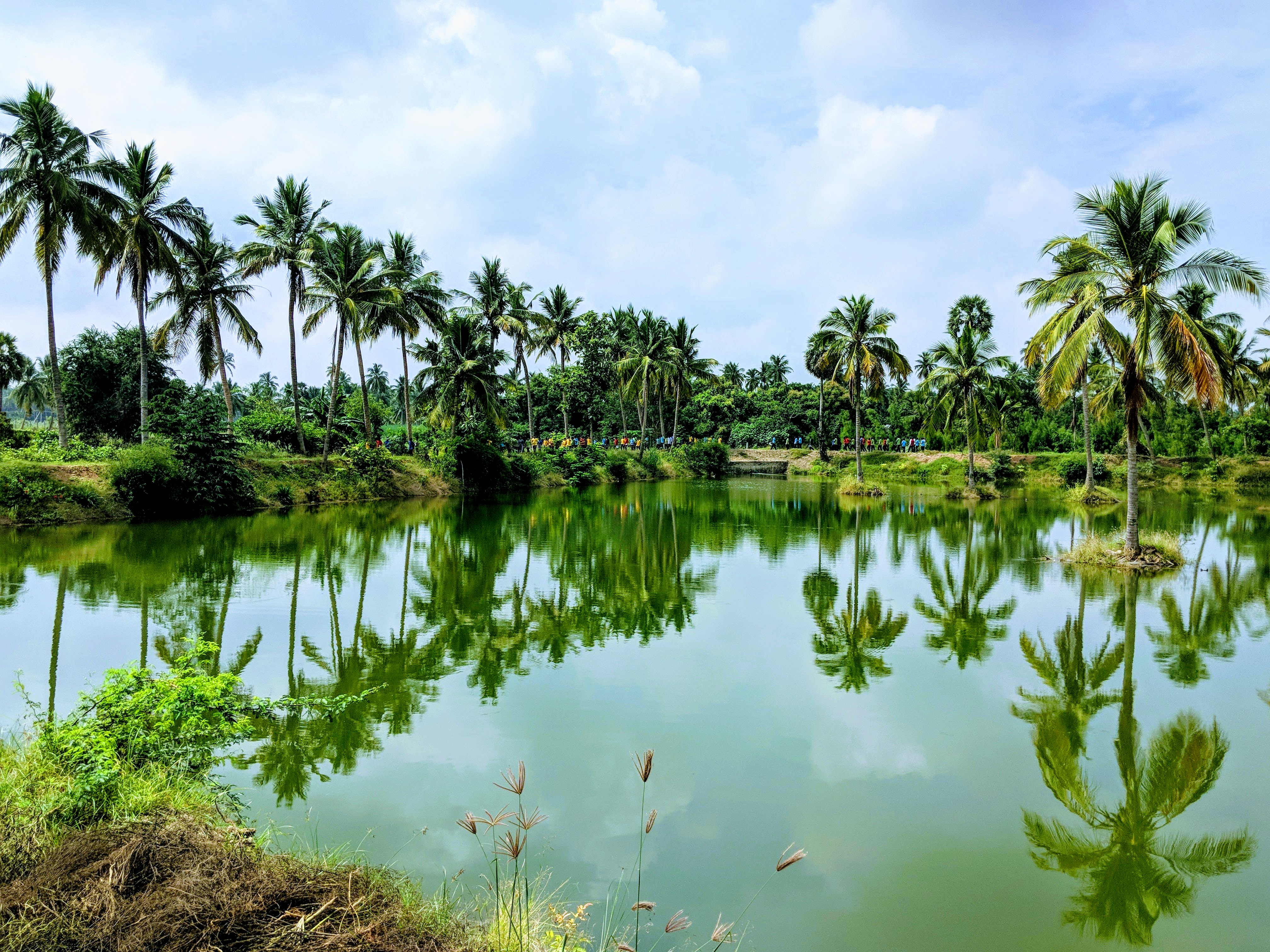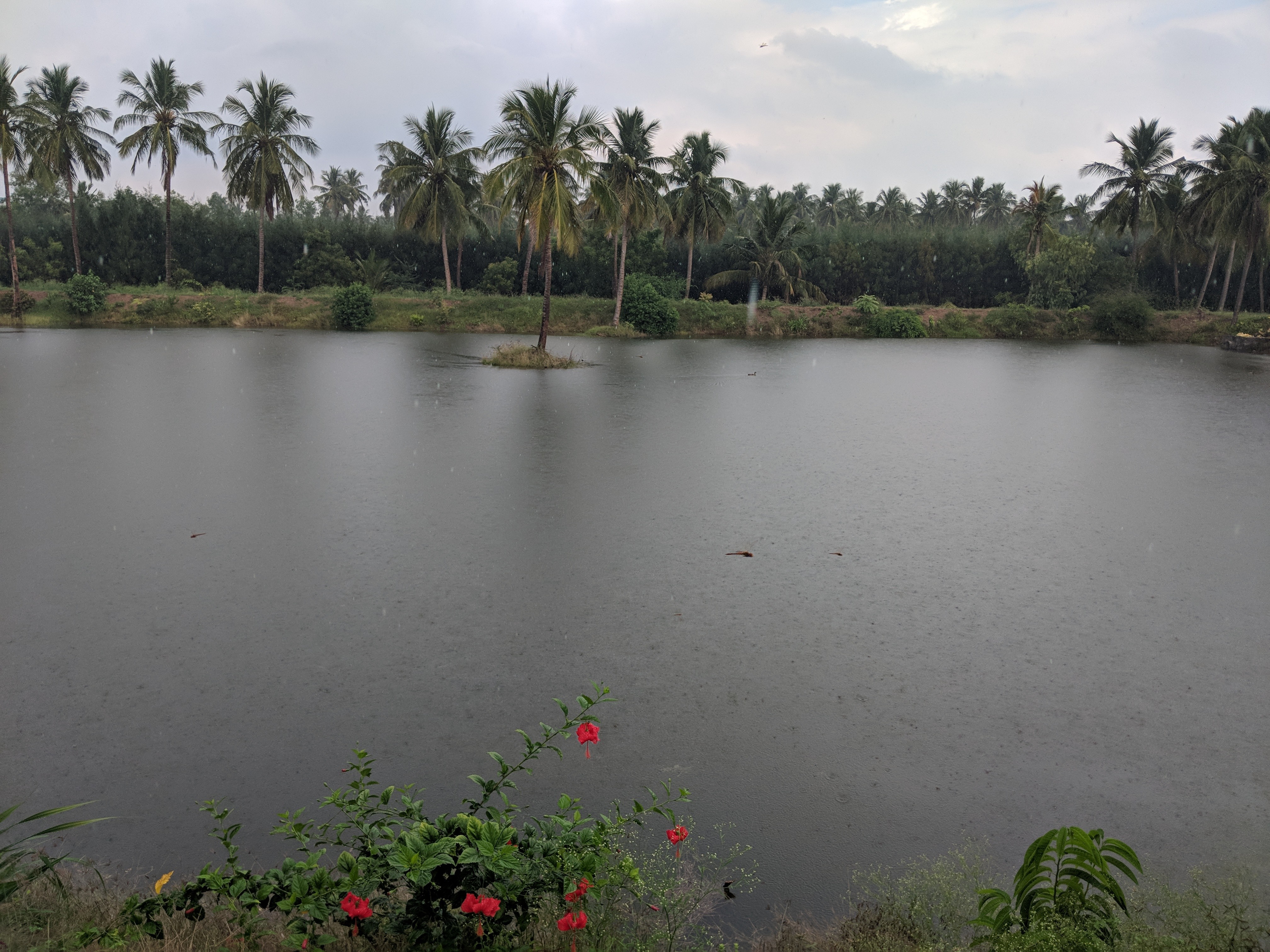One Man’s Efforts Ensured That This TN Village Doesn’t Rely on Borewells Anymore!
And that’s not all. This organic farmer’s efforts have replenished the groundwater table for areas up to 2 km east! #WaterWarrior #Respect #RealLifeHero

Back in 2016, Karthikeya Sivasenapathy, an organic farmer residing in Kuttapalayam village in Kangayam Block, Tiruppur district, was very concerned about the severe water deficit in the region.
Sivasenapathy is one of Tamil Nadu’s foremost experts in the preservation of native cattle breeds.

Following yet another drought, there was no water either for farming or livestock. Farmers from his village and surrounding areas were buying water at exorbitant rates, but those who couldn’t afford it had two options—stop farming or leave their village in search of work elsewhere.
Making matters harder, the Kangayam Block falls in the Kongu region of western Tamil Nadu, a rain shadow region under the Western Ghats.
Interested in saving water? Check out the Water Saving Switch Adapter, which saves up to 80% of the water that would have otherwise been used with a normal tap. Find it here on The Better India Shop.
Until the 1950s, in this semi-arid region, which barely receives 620-650mm of rainfall annually compared to the state average of 1150 mm, livestock keeping (particularly cows and sheep) was the primary source of income with very few practising agriculture.
However, the construction of the lower Bhavani canal in the 1950s brought with it a lot of water for agriculture and consequently the region underwent a serious transformation.
With the availability of water, farmers began to grow cash crops like coconut, sugarcane and paddy, amongst others. Besides growing these water-stressed crops, the Kongu region also saw major industrial development, which again meant depleting water sources.
From 50 feet in the early days, farmers today have to dig borewells that go beyond 1500 feet.
Add environmental degradation in the Western Ghats (the source of all major rivers in South India) and what you have is drought and acute water scarcity.
This is the state of Tamil Nadu today.
“We decided that merely working on livestock wouldn’t help anymore because for us and them to survive, we need water. The first step we took was to construct a rainwater harvesting pond on a 4.3-acre plot of available land in the neighbouring Valliarachal village of Kangayam Block. Around the pond, we planted native palm trees,” says Sivasenapathy, who is also the co-founder of the Senaapathy Kangayam Cattle Research Foundation (SKCRF), in an exclusive conversation with The Better India.
Measuring 750-800 feet in length and 380-400 feet in breadth, the SKCRF began work on the pond in August 2017, and it was completed by the end of October 2017.
“For the first year, rainwater came in November, and the pond dried up by April. In the second year, we found that water lasted until the end of July. This year, we expect the water to last till the rains arrive by August-September. We depend on monsoons for the pond to get replenished,” he says.

Sivasenapathy mentions that it is apt that Valliarachal is the site of the pond. The village has a rich history to it, finding a mention in ancient records dating back 2,000 years. According to legend, Lord Muruga met his wife Valli in this village. There is a small Murugan temple in the village which is also very old. There is also a Shiva temple here which is over 1100 years old built by the Chola kings. The pond is located opposite this temple.
For the construction of this pond, SKCRF employed 20-25 labourers, heavy machinery to dig out the mud and construct culverts where the water enters and exits the pond, ten tractors for 30 days and five tipper lorries for 30 days.
The mud extracted from the pond area was used by residents on their farms to make their land more fertile. However, SKCRF still has some stockpiles of the mud, which they use to replenish their farm and also construct eco-friendly mud homes for workers staying on the farm as well.
More critically, however, farmers in the village have stopped using borewells. Water from the pond has not only replenished groundwater levels of the village, but thanks to it around 100 wells and borewells are full today. Also, the groundwater table for areas up to 2km east of the pond has been replenished.
Although agricultural activity has also picked up once again, farmers in the region have seemingly learnt their lessons from the past.
“Today, people have drastically reduced the production of water-stressed crops like coconut and sugarcane. In their place, the sowing of onions, groundnuts and other vegetables are catching up. Also, there is no fear today that their wells or borewells will go dry. They can cultivate their lands with great confidence,” says Sivasenapathy.

Speaking to a Tamil news channel, Senthil, a farmer, says, “In our village, around 100 acres of the land has become useful thanks to the pond. By storing rainwater, we can use it for a long time.”
Meanwhile, another farmer, Loganathan, says, “If it rains, the water gets filled in the pond. Before the pond, the water would flow to the panchayat town of Muthur. Now, the water is collected in the pond, and the water percolates into the ground. Our lifestyle has become more consistent with the water available.”
“Even if we don’t receive water from the lower Bhavani canal, we have enough water for farming because it has been stored. Even if the rain doesn’t come on time, we can survive with the pond water available,” adds Pazhanisamy, a local farmer.
So, this is the kind of real change which the rainwater harvesting pond has brought about, transforming the entire village and its surrounding areas.
Also Read: As Chennai Struggles For Water, This Man Has Enough For 6+ Months!
However, constructing this rainwater harvesting pond has come at a cost—around Rs 18 lakh. Nearly 20% of the money came from funds generated by SKCRF, but the rest was borrowed from the Muthur branch of the Syndicate Bank. It’s an agricultural loan they can repay over seven years.
For repayment, the SKCRF has initiated a fisheries project. The fish collected from the pond is sold to local contractors. With the availability of water, they are also growing different crops and selling them as well.
Besides assisting local farmers, this rainwater harvesting project has also helped revive SKCRF’s main project, which is the conservation of native cattle breeds and creating awareness and sustainability of livestock based farming system.

“We, the founders of SKRCF, had grown up with cattle, seeing them transport water from the wells, transport goods in bullock carts, and felt a sense of attachment to them. Thus, when we read a government report of how the population of Kangayam cattle, the mother breed of cattle in the state, had fallen from 40 lakh in the 1940 to 4 lakh in 2004, we decided to do something about it. With the advent of mechanization, this livestock went into disuse. We were on the cusp of losing something that has kept us alive for thousands of years. So, we wanted to work on the conservation of Kangayam and other native breeds of Tamil Nadu. Thus, in 2009, the SKCRF was born. Today, we are raising awareness about these native breeds and promoting sustainable livestock-based organic farming system,” he says.
Thanks to the pond, their project will proceed unhindered, and farmers who have been farming for generations will no longer have to sweat about the availability of water.
(Edited by Gayatri Mishra)
Like this story? Or have something to share? Write to us: [email protected], or connect with us on Facebook and Twitter.
If you found our stories insightful, informative, or even just enjoyable, we invite you to consider making a voluntary payment to support the work we do at The Better India. Your contribution helps us continue producing quality content that educates, inspires, and drives positive change.
Choose one of the payment options below for your contribution-
By paying for the stories you value, you directly contribute to sustaining our efforts focused on making a difference in the world. Together, let's ensure that impactful stories continue to be told and shared, enriching lives and communities alike.
Thank you for your support. Here are some frequently asked questions you might find helpful to know why you are contributing?


This story made me
-
97
-
121
-
89
-
167














